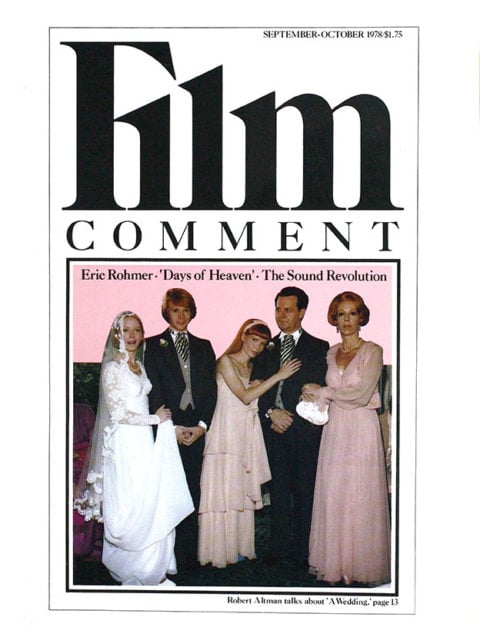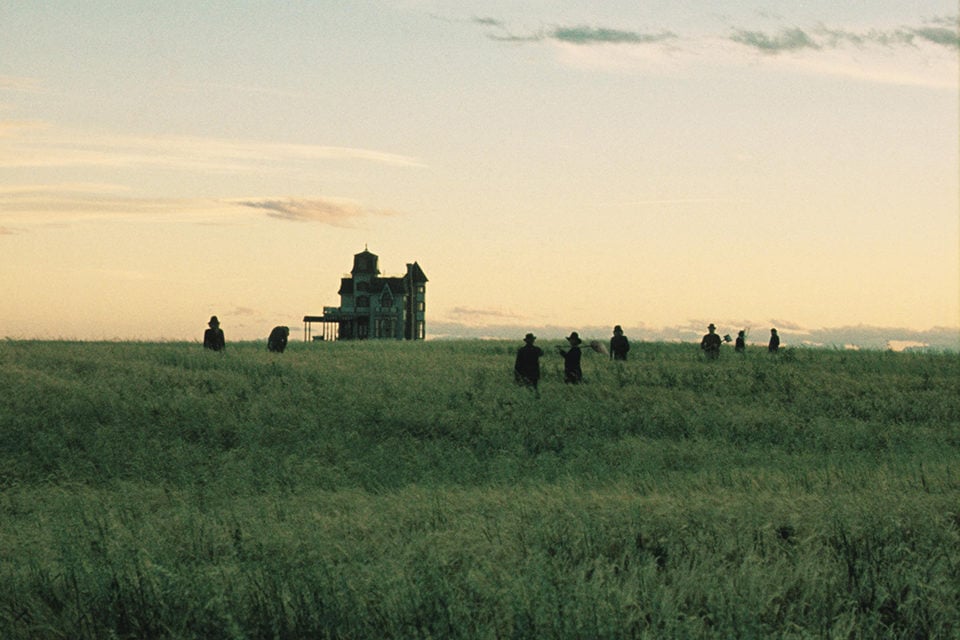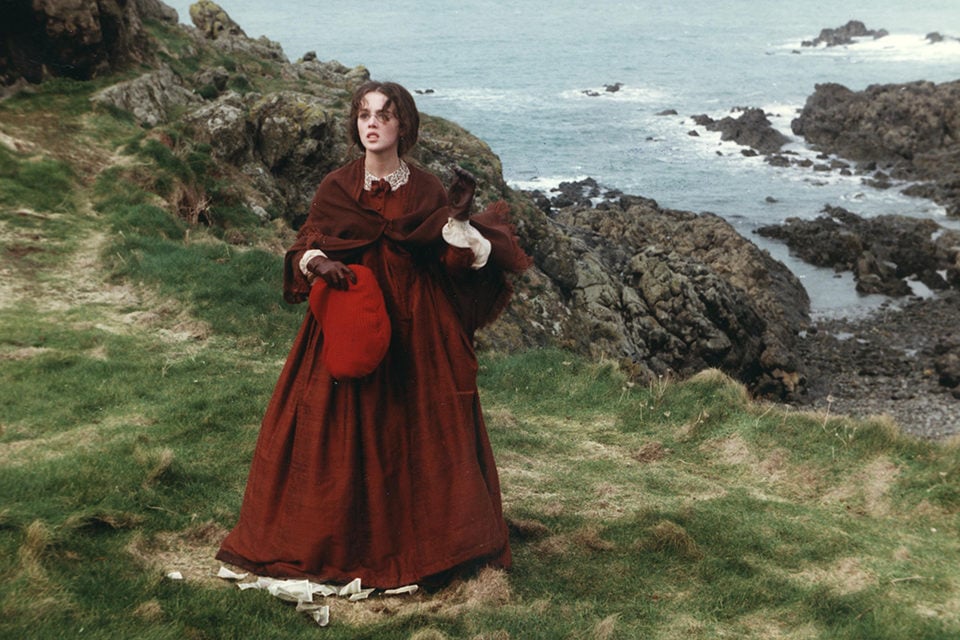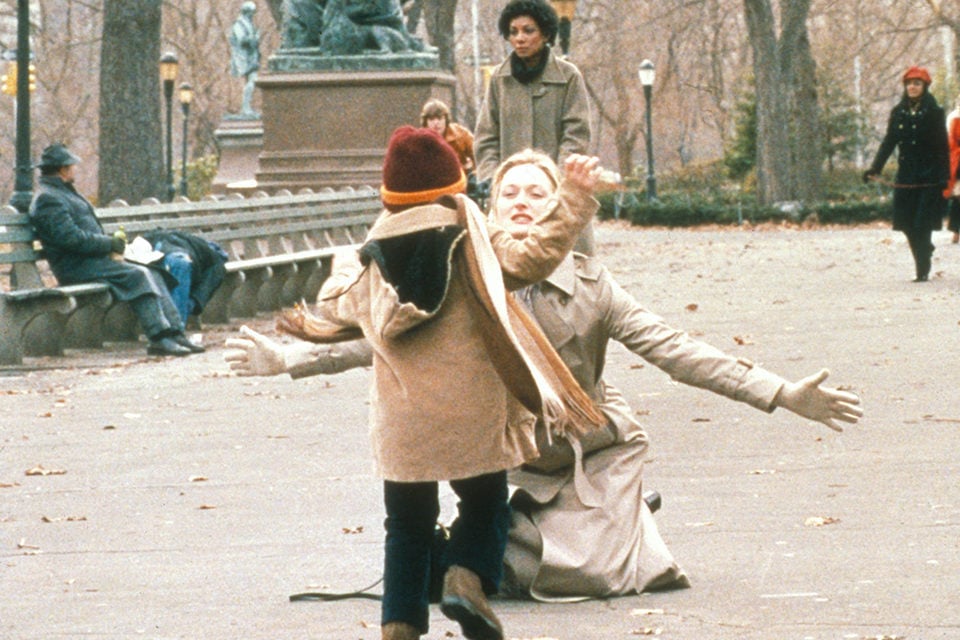
Interview: Néstor Almendros
Until recently, Néstor Almendros was primarily known for his work as cinematographer for French New Wave directors Eric Rohmer and François Truffaut. Now, largely as a result of Hollywood’s nouvelle vogue of hiring foreign directors of photography, he adds a new distinction: as imagemaker of one of the year’s most beautifully shot American films, Terrence Malick’s Days of Heaven. He is currently in preproduction for another American film, Robert Benton’s Kramer vs. Kramer, and took time out to discuss his work on Days of Heaven.

The most frequent comment one hears about Days of Heaven is that it’s a stunningly beautiful film, which is certainly a tribute to your work as cinematographer on the film. How did Terry Malick choose you for his cameraman?
He told me he liked very much The Wild Child, that it was one of his favorite films.
But that’s a black-and-white film.
Yes, but you could tell that there was very little lighting on it. Actually, I did The Wild Child as if it were a color movie. I didn’t light it for black and white. My inspiration was silent cinema before they got too sophisticated: Feuillade, Griffith, the early movies.
What was it like, working with a director as meticulous at Terry Malick?
I found out very soon that Malick was a man who was very much interested in photography, as well as the story and the actors, but that he also knew a lot about photography, which very few directors do. So he not only let me do what I always wanted to do which is to use less and less electrical light on a period film—but even pushed me in this direction. Rather than reconstructing the light, we would be waiting for the right natural light at the right moment. And it was very exciting to work with a man like that.
Was it the first time you had used just natural lighting for exterior shooting?
No. I usually work with natural light. But there are very few films that have as many and different exteriors as that, to begin with. The light in France is very soft because there’s always that cushion of clouds that covers everything, so things are easy. In America, the air is much more transparent and the light is harsher. When a person is backlit against the sun, they are totally black. So normally, arclights or reflectors are used to fill up the area which is in shadow. We felt it was better to use nothing and to expose for the shadow, and let the exterior go “burn” if necessary. That was when we shot with sunlight.
But you may have noticed that at other times there is no sun, and that the film has a very weird light. That comes from the fact that we shot very often at the “magic hour.” We rehearsed with the actors and cameras, and then when the sun set, we started shooting. Of course, we had to work quickly because there was very little time to do the whole sequence. We would start by having a normal lens, then getting the fastest lenses because it was getting darker, and then pushing the film at the laboratory, and then, as a last resort, pulling out the 85 filter—which withdraws a little light—just to get the last glow of light.

Days Of Heaven (Terrence Malick, 1978)
Did you want the backlit people to be in silhouette?
They’re not really in silhouette. As I said before, we exposed more for the shadow. We were in between, actually. The faces were slightly underexposed and the backgrounds were slightly overexposed. If we had used arclights—which is usually done—then it would all have been even, flat, and uninteresting.
When we were shooting inside at day time, we had people beside windows. We used the Vermeer technique, which I had already used in The Marquise of O. It just means having the window at the side of a person, like “The Lacemaker” of Vermeer, and letting the actual light come from the window and light the person without any help. We used that idea very often. It’s also very comfortable for the actors because they don’t have that extreme heat coming from the electrical lights, which is something that people neglect: actors, and technicians, should feel comfortable. If an actor has to be giving emotion, and on top of that he has to have a hundred lights and the heat—it’s almost like a police investigation.
When we had night scenes—since it was a period movie, although we assumed that the house of Sam Shepard had electricity, but weak—we knew that outside, at night, there was no other way of lighting than lanterns or bonfires. So we wanted it to look as if people had been actually lit by the fire. That is done quite often in movies, especially westerns, where you have people around the fire. Usually they just hide some light behind the wood that increases the natural flame light. It always looks very fake to me; I always thought it looked ridiculous. For instance, a marvelous movie like Kurosawa’s Dersu Uzala is killed by those night scenes by the fire, in which even the color temperature is wrong because not only is there too much light, but it’s not even of the same quality. It’s a very whitish light in relation to that of the fire, which is practically symbolic because it doesn’t give any light. Many movies are that way.
So we developed a technique. Instead of lighting faces with electricity—they usually light with electricity and then they wave things in front of the light to imitate the flickering of the fire—my technique has always been going to the real thing. So I thought, “Why not light with real fire?” But of course, real fire is not very easy to handle. So we had propane bottles with a tube with gas burners, and then we just lit that. That way, we could make the flames higher or lower at will. When the fiddler was playing music, he was actually lit by flames, so it had the right color temperature and the right flickering—the real thing. This can be done today because the lenses are faster, and because you can push the film in the laboratory—things you couldn’t do before. I think that gave it not only authenticity but beauty.
When people carried their lanterns to pick up the locusts, we also came to the principle that the lanterns should actually give light—they should not be symbolic as they usually are—so we had them carrying real lights that are actually lighting the scene.
Some members of the crew—it was a Hollywood crew—were very unhappy, because they had never done that before and also, we didn’t know whose job it was to do that. Because the gaffer does electricity: why should he be handling bottles of propane? Then the prop man: why should he do it? After all, it was a lighting problem. They were all compartmentalized. Suddenly you had something that didn’t belong to anybody, so that made some people pissed off.
I heard that the real fire got out of hand. Is this true?
Yes, some times. We shot fire about two weeks—every night was fire. Several times it got a little frightening, especially one time we really got surrounded by flames and the air was beginning to be asphyxiating. The gaffers and grips were very quick, they pulled the trucks and everybody got out of there because it was very scary.
How did you orchestrate the fire scene?
Well, of course we worked with several cameras at the same time. I would be next to the main camera. But some of the other cameramen got good stuff and I wasn’t there, so they should be credited for it, too. One would use a telephoto lens, another one would go hand-held. We also had a Panaglide, which is like a Steadicam, and the guy who was carrying it was actually going through the flames and in and around the people.
Was he wearing a special suit?
No. No one was wearing anything special. But this was a blessed movie. We could have really gotten hurt—it was very dangerous—but nobody got seriously hurt.

The Story of Adele H. (François Truffaut, 1975)
Haskell Wexler replaced you because you were scheduled to shoot The Man Who Loved Women. At what point did he come in, and how did it work out?
It was already decided from the beginning, when I accepted the job, that there was the Truffaut film. We were hoping that Truffaut could push the film back, but he could not, so I had to go. And of course, I am committed and indebted to Truffaut and Rohmer, so I could not possibly not leave. So I thought of all the people I knew and admired in America; I thought of Haskell, who was a friend, and a great great director of photography. I asked him if he could come and continue my work. To my pleasure, he accepted to come, so we overlapped for a week: we saw most of the rushes together so he could follow the same style.
Haskell was wonderful because he actually did follow the style. I don’t think anybody can tell the difference between what I did and what he did, I hope. He did some scenes with snow, because when I left, the snow had not come yet. Also, after Richard Gere dies and they go into the town and the little girl goes to the school to study dance—all that part he did. And then parts here and there—things which are mixed with mine some times so well that even I can’t always tell what he did and what I did. He tends to work more with filters and with gauze in front of the camera, but because I do not, this time he did not use them. So he followed the style of the film. But of course Terry unifies everything, because there were other people, like Jacob Brackman, doing second-unit work, and after the film was completed there was still more shooting months later—and everything is unified by the immense talent of Terry, as he did in Badlands, where there were three consecutive directors of photography.
Is that because of his technical know-how?
Yes, because of his technical know-how, and because of his infallible taste, and because he would not let anybody do anything which went against his ideas. And he knows exactly what should not be done. If there’s anything that’s wrong he will tell you right away. Also, we had this principle established from the beginning: we designed the movie in such a way that anyone who came later had to follow that style, which was leaving things as they are, as much as possible.
Has the work on Days of Heaven influenced your later work?
It did affect me. In Days of Heaven. I went to extremes that I’ve never reached before as far as exposing the film—for instance, when you’re shooting at 1.1 on your lens stop and you’re pushing the film one stop and you have no filter—they’re the kinds of things that you don’t dare to do in films because if it’s wrong, then the producer will blame you for having taken such a risk. But since Terry was willing to experiment that way, he allowed me to go very far, and now I feel more confident. This film was a lesson and when I got back to France and did The Man Who Loved Women, and The Green Room, and Madame Rosa, the people I worked with noticed it. So, Days of Heaven is actually a turning point in my career, from familiar movies to big movies—not that the other ones were not “big,” but more scope, more spectacular.
You mentioned the painter Vermeer in connection with The Marquise of O. Eric Rohmer has said that for Perceval, you also studied paintings of the period. Do you often do this?
Yes. For Perceval we looked at miniatures, not paintings, because there were no paintings in the early middle ages. We went to the very harsh colors of the miniatures, which is almost the opposite of what we did in The Marquise of O, where the colors were much softer and more subdued. In other movies with Rohmer, we always started with a painter. In The Marquise of O, although the light was very Vermeer, the shapes and the framing were more David and, especially, Henry Fuseli, the Swiss Romanticist. For Claire’s Knee, we started with Gauguin because of the even colors. Women had long skirts with flowers. There were big patches of blue mountains and green grass in the foreground.
For Truffaut’s Adele H., we went to Victorian painting and also some Impressionists. For Jack Nicholson’s Going South, we had books of Parrish, Dixon, Maynard, that set designer Toby Rafelson had brought together with Jack, who collects this art. We don’t copy. We just look at them a lot before the film, and sometimes during the film. It’s more for inspiration. Although in The Marquise of O, we actually did copy a painting by Fuseli when she has a nightmare.
Now, on Kramer vs. Kramer, Robert Benton and I are going, strangely enough, to Piero della Francesca. He’s the painter who is inspiring us for a movie taking place on the Upper East Side of New York! But it does help the composition and especially the colors. Even when we’re scouting locations, we’re looking for siennas and earth-brown colors, things that remind us of Piero della Francesca—they exist in New York City, we’ve found them.

Kramer vs. Kramer (Robert Benton, 1979)
Was there a painting influence on Days of Heaven?
We had a wider range of influences. We thought of painting, but we did not have a very definite model. Other movies were inspirations—like Griffith, photographers of the time, too, as is indicated by the credits.
Was there any reason, other than economic, why Days of Heaven was shot in Canada? Was it the light?
It was also because this area belonged to the Hutterites, a religious people who live in another era. Even the wheat they grow is not like other wheat, it’s longer. They have enormous, untouched areas of land with no modern things, which you can’t find anymore anyplace. There were these red silos, and there were collectors who had these steam-engine tractors and cutters. It was very convenient. For me, it was very convenient: I probably wouldn’t have been able to do it in America at that time, because of the unions, whereas there I had no problem.
Were you required to use a camera operator?
I had to have a camera operator. Sometimes I operated the camera myself on Days of Heaven, when they let me, but it was a sacrilege. In Europe, I always operate. But I was lucky to have very good operators on Days of Heaven. Hollywood technicians are excellent: they’re willing to work, they have great energy and lots of ideas, solutions for problems. Nothing is impossible for them.
On Days of Heaven we had the great chance to have the cooperation of several people on the crew who were very united. They were: the costume designer, Patricia Norris; the set designer Jack Fisk; the editor Bill Weber; and Terry and me and Jacob Brackman, and Bert and Harold Schneider. We were a little group who were talking as we drove home the one hour from the wheat fields. So we had a kind of improvised production meeting every day.
You cannot do good photography or stylish photography if the costume designer or the set designer and the rest don’t follow. If you have in front of your camera ugly things, you cannot get beauty out of ugliness—it’s very difficult unless you intend to show the beauty of ugliness like Andy Warhol. But in our case we chose very carefully the colors of the clothes and the colors of the set.
Many people think that the director of photography only has to care about the camera and technical things. He also has to care about working with these people very closely. I arrived only a few days before the start of the film, but since we were so slow we had time to work on it and catch up. Of course, Terry had already prepared things a lot and we had had long-distance conversations before my arrival.
Was there ever an impossible shot on this film?
Terry wanted to keep shooting long after the sun had set. I told him he was like Joshua in the Bible, trying to stop the sun. He was very frustrated; I think he hated us for not stopping the sun, as though it were our fault.







